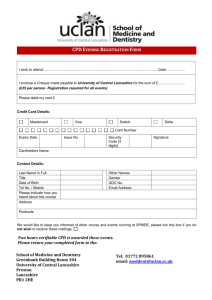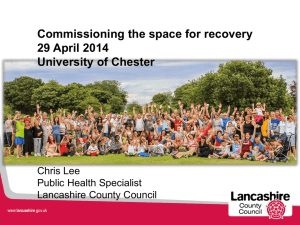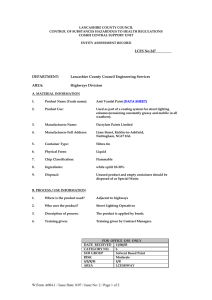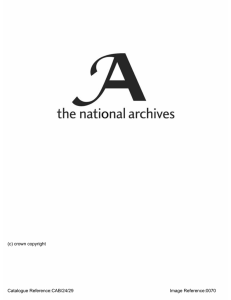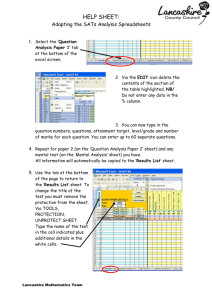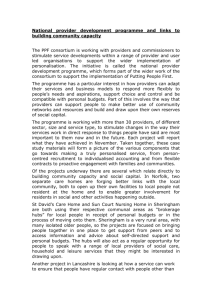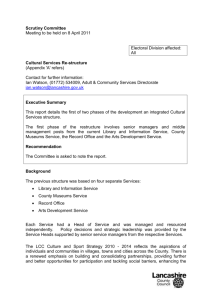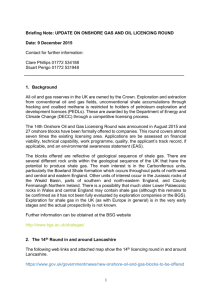Co- Commissioning Board - Third Sector Lancashire
advertisement
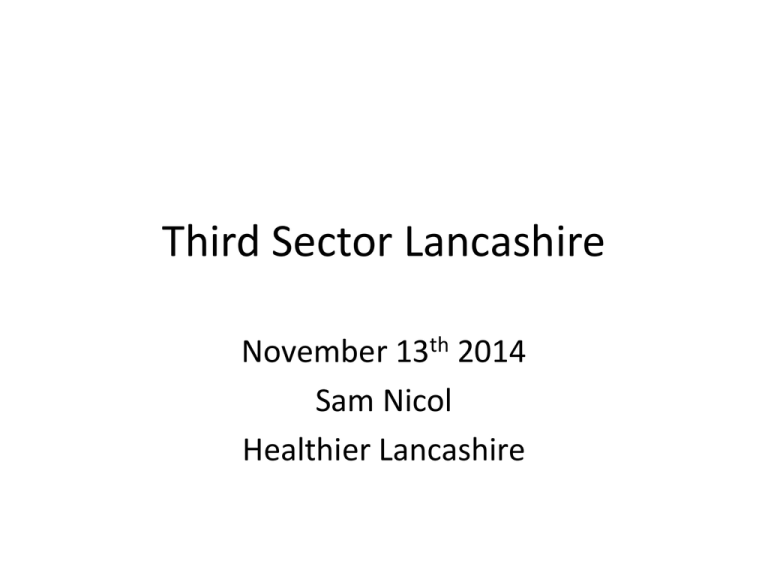
Third Sector Lancashire November 13th 2014 Sam Nicol Healthier Lancashire Why do we need Healthier Lancashire? The indexed factbase produced as part of a Sustainability Assessment Forecast shows challenges across the county in: • Outcomes • Finance • Workforce • Increased demand • Demographic changes • Estate These require a concerted countywide approach with local implementation What • We have been working with the Lancashire system to design a programme for action through meetings with individual leaders, teams and system wide meetings • Emerging themes as a Lancashire response to the Forward View: – Application of agreed clinical standards across all Lancashire – Programme to support the systematic development of out of hospital services, that meet the needs of individual communities – Digital developments – Cultural transformation • • • • • Empowered person Third sector development Collaborative leadership development Development of self care, personal responsibility etc. Conversations with the public – Underpinned by economic model owned by Finance & Investment Group • Purpose document Leadership Forum 27th November 2014 • Individual Boards and statutory bodies January and early February 2015 Third sector development Areas where the voluntary sector could do more • • • • • • • • • • • Empowering patients Supporting self-management group-based education voluntary sector advocacy and support for integrated personal commissioning (IPC) creating new options for health-related volunteering expanding their role in the provision of information, advice, advocacy and as a provider of vital services with paid expert staff.. Digital Social capital Innovation Community development Social value Equal voice at the table What would enable the voluntary sector to do more? • Clarity from commissioners about their plans and their commissioning intentions, including how they will meet their responsibilities under the Social Value Act • Grants • Multi-year agreements • Funding for self-management support (replicating Scottish work) • Communication structures – mapping networks • Infrastructure organisations – ensuring that they are fully sighted and committed to the principles of Healthier Lancashire • Quality assurance/standards of care How • Robust programme & governance structure • Clear resource plan for the programme • co-ordination and facilitation at an all Lancashire level, supporting local implementation • Leadership at a system and network level as advocated by Stevens rather than at a single organisational level
